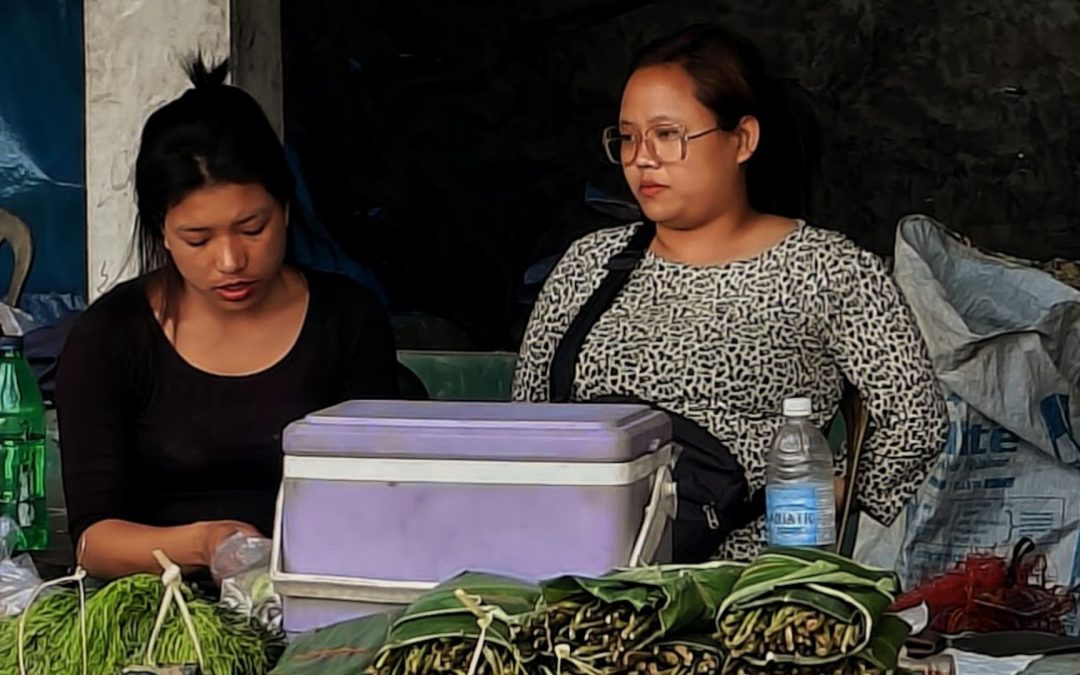Women are leading a cultural shift in the undulating hills of Mizoram, where life moves at its own pace and the clouds dip low. heir contributions to the informal economy are the backbone of this state’s unique socio-economic fabric. In agriculture, bustling local markets, and small businesses, Mizoram’s women embody strength, resilience, and leadership. Their stories, though rooted in this northeastern state, offer lessons for informal economies across the globe.
Women as Pillars of Agriculture
Agriculture in Mizoram remains largely subsistence-based, and women are pivotal to this sector. They labor in jhum (slash-and-burn) cultivation, tending to crops like rice, ginger, and turmeric. Beyond the physical toil, they manage post-harvest activities, including storage and sale, ensuring food security for their families and communities.

Their role transcends economic activity; it preserves traditional agricultural knowledge and practices that are inextricably linked to Mizoram’s ecological balance. By intercropping, rotating crops, and maintaining soil fertility, these women exemplify how sustainable agriculture can thrive even in challenging terrains.
The Lifeblood of Local Markets
Walk through any bazaar in Mizoram, and the presence of women is unmistakable. They dominate the local markets, selling everything from fresh produce to handwoven textiles. These women are not just vendors; they are entrepreneurs who understand market demands, price fluctuations, and supply chains.

Their resilience is striking. Despite limited access to formal financial services, they manage to sustain and grow their businesses. They juggle roles as caregivers and breadwinners, seamlessly weaving the threads of home and commerce.
Small Businesses, Big Impact
Mizoram’s women are also venturing into small businesses, embracing traditional crafts like weaving, bamboo art, and food processing. These micro-enterprises often serve as a family’s primary income source.
Take, for instance, the handloom industry, where women artisans craft exquisite puan (traditional Mizo wraparounds). These textiles are not just garments; they are cultural artifacts that command respect across India. By marketing their products locally and digitally, women entrepreneurs are breathing new life into traditional crafts and connecting Mizoram’s heritage with the global market.
The Gender Dividend: Lessons from Mizoram
Mizoram’s informal economy holds several lessons for regions grappling with similar challenges:
- Empowering through Collectives: Women in Mizoram often operate through cooperatives and informal collectives. These groups provide financial stability, shared knowledge, and negotiation power. For instance, weaving collectives have enabled women to access larger markets and negotiate fair prices. Scaling such models could empower informal workers globally.
- Leveraging Local Knowledge: Women in Mizoram seamlessly blend tradition with innovation, such as by integrating organic farming techniques into jhum cultivation. Governments and NGOs can replicate this approach by supporting women-led initiatives that draw on indigenous practices.
- Investing in Digital Tools: Digital inclusion has begun to make inroads in Mizoram, with women entrepreneurs using platforms like Instagram and WhatsApp to sell textiles and crafts. According to a 2022 report by the Internet and Mobile Association of India, rural internet penetration in the northeast remains at only 38%, leaving significant room for improvement. Expanding access to digital tools and training can help women scale their businesses beyond local markets.
- Social Protection for Informal Workers: Globally, informal workers lack access to social security. Mizoram’s example highlights the importance of designing policies that cater to the dual burden women face as caregivers and breadwinners.
Breaking Barriers
While Mizoram’s women have made remarkable strides, structural barriers persist. A lack of formal credit access, gender disparities in land ownership, and limited exposure to national and global markets remain significant challenges. However, the resilience they demonstrate offers a blueprint for empowerment.
To unlock their full potential, governments and development organizations must prioritize:
- Gender-sensitive financial products, such as low-interest loans for women in agriculture and trade.
- Skill development programs that enhance digital literacy and entrepreneurial skills.
- Infrastructure improvements, including roads and internet access, to bridge rural-urban divides.
A Global Perspective
The stories of Mizoram’s women resonate far beyond its borders. Their contributions highlight the untapped potential of informal economies worldwide, which the International Labour Organization estimates employ over 61% of the global workforce. By investing in the empowerment of women in informal sectors, nations can unlock economic growth, reduce poverty, and foster sustainable development.
A Closing Reflection
The women of Mizoram’s informal economy teach us that resilience is not born of privilege but of necessity. They adapt, innovate, and lead, often with limited resources and support. Their strength underscores a larger truth: economies thrive when women thrive.
By championing their stories and addressing the barriers they face, Mizoram—and the world—can move closer to a more inclusive and equitable economic future. In the words of a Mizo proverb, “It is the hand that rocks the cradle that rules the world.” Mizoram’s women are proving that, one market stall and handwoven thread at a time.

